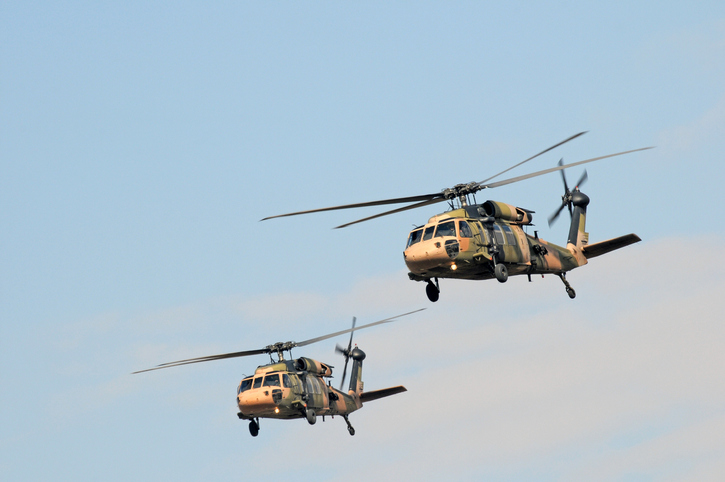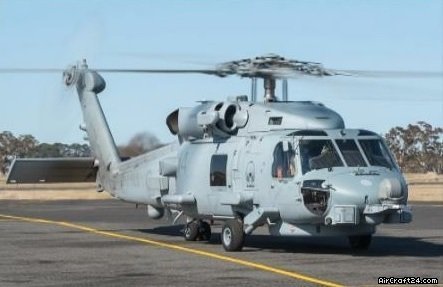Sikorsky S 70: Reinventing Tactical Operations with Cutting-Edge Modern Technology
Wiki Article
Rotary-Wing Airplane Offering Superior Durability and Precision Design
In the world of aeronautics, rotary-wing aircraft have actually long been recognized for their special capacities in various operational atmospheres. From armed forces goals to noncombatant applications, the advancement of rotary-wing technology has led the way for equipments that offer unequaled resilience and accuracy design. Via innovations in materials and construction methods, combined with innovative trip control systems, these airplanes have actually become essential tools for tasks that demand both toughness and precision. As we discover the detailed equilibrium in between innovation and reliability in rotary-wing aircraft, it becomes evident that the convergence of cutting-edge innovation and tested style principles has set a brand-new criterion for efficiency and performance in the aerospace sector.
Development of Rotary-Wing Modern Technology
Throughout the background of aviation, the advancement of rotary-wing innovation has been a testimony to regular advancement and advancement in aerial engineering. From the very early days of upright flight with primary styles to the sophisticated helicopters and various other rotary-wing aircraft these days, the development in this field has actually been amazing.In the early 1900s, leaders like Igor Sikorsky and Juan de la Cierva made significant strides in rotary-wing modern technology. Sikorsky's VS-300 helicopter, first flown in 1939, noted a zero hour in the advancement of practical rotary-wing aircraft. This success paved the way for more developments in upright flight capacities.

Today, rotary-wing aircraft play important duties in numerous fields, consisting of military operations, emergency clinical services, police, and industrial transport. The development of rotary-wing modern technology remains to press the limits of what is possible in vertical flight, making certain that these airplane continue to be indispensable assets in the aeronautics sector.
Products and Building And Construction Innovations
Showing a combination of innovative materials and precise building methods, rotary-wing aircraft have undertaken substantial improvements in sturdiness and efficiency. Among the essential developments in products made use of for rotary-wing airplane is the boosting usage of composite materials. These products, such as carbon fiber strengthened polymers, provide a high strength-to-weight proportion, boosting both the structural honesty and total performance of the airplane. Additionally, developments in manufacturing procedures have enabled even more intricate and specific building and construction of rotary-wing elements, contributing to enhanced the rules of aerodynamics and performance.In addition, the integration of sophisticated coatings and surface area therapies has played a critical role in improving the durability of rotary-wing airplane. These layers offer defense versus corrosion, abrasion, and severe weather condition problems, expanding the life expectancy of the airplane and decreasing upkeep requirements.
In terms of construction innovations, additive manufacturing, additionally called 3D printing, has revolutionized the manufacturing of complex parts for rotary-wing aircraft. This technology enables for fast prototyping and modification, leading to faster development cycles and decreased expenses. Generally, the continual advancement of products and building methods is driving the abilities and efficiency of rotary-wing airplane to new heights.
Precision Flight Control Solution

The assimilation of GPS technology better improves the precision and dependability of these systems, permitting specific navigating, waypoint monitoring, and automated flight control. sikorsky s 70. This degree of precision not just enhances the safety and security of rotary-wing operations however also enhances overall operational performance and objective performance
Furthermore, the continual improvements in synthetic intelligence and artificial intelligence have actually promoted the development of independent trip capabilities within Accuracy Trip Control Systems. This allows rotary-wing airplane to execute complex objectives with unequaled precision and consistency, making them important properties in a variety of applications, consisting of military operations, search and rescue objectives, and airborne digital photography.
Resilience in Testing Settings
Popular functional setups, rotary-wing airplane demonstrate extraordinary strength and effectiveness, ensuring optimal performance under difficult environmental problems. These airplanes are created to hold up against a wide array of environmental factors, including extreme temperatures, high winds, this content and rough terrain, making them well-suited for various missions in diverse landscapes.One essential element contributing to the sturdiness of rotary-wing aircraft is their sturdy building and construction. These aircraft are built making use of premium materials and progressed design techniques to enhance their structural integrity and reliability. In addition, elements such as rotor blades, engine systems, and touchdown equipment are diligently designed to stand up to the pressures and anxieties come across during procedures in difficult environments.
Moreover, rotary-wing aircraft are geared up with advanced onboard systems that monitor efficiency metrics in real-time, enabling aggressive upkeep and early discovery of prospective concerns - sikorsky s 70. This proactive approach assists prevent unexpected failings and makes certain the ongoing airworthiness of the airplane in requiring operational setups. In general, the longevity of rotary-wing aircraft in challenging atmospheres is a testimony to their superior engineering and layout, making them crucial properties for various mission-critical procedures
Maintenance and Integrity Specifications
The adherence to rigorous maintenance and integrity criteria is paramount in ensuring the ideal efficiency and security of rotary-wing aircraft. Normal upkeep checks, conducted by certified service technicians, are vital to identify and resolve any type of prospective problems prior to they jeopardize the airplane's performance. These checks include an extensive evaluation of all critical parts, including the engine, blades system, avionics, and hydraulic systems, to assure that they remain in prime functioning problem.In addition, adherence to arranged upkeep intervals based on manufacturer standards is critical for promoting the airplane's dependability. This read this article aggressive strategy assists protect against unanticipated malfunctions and ensures that the aircraft remains airworthy for its intended goals. Furthermore, the application of durable integrity requirements, such as regular element testing and substitute based on established lifecycles, additionally improves the airplane's stability.
Conclusion

In conclusion, the advancements in rotary-wing aircraft innovation have actually resulted in superior durability and precision engineering. With cutting-edge materials and building and construction methods, together with accuracy trip control systems, these aircraft can operate in tough environments with enhanced dependability. The maintenance and reliability standards make sure that these rotary-wing aircraft proceed to carry out at their ideal, making them crucial properties for different sectors.
Showing a combination of sophisticated products and precise building and construction techniques, rotary-wing aircraft have actually undergone substantial improvements in longevity and performance. One of the essential technologies in materials made use of for rotary-wing aircraft is the increasing application of composite materials.With precise interest to detail and advanced technical assimilation, rotary-wing airplane have actually accepted Precision Flight Control Solution as a foundation of their Your Domain Name operational excellence. Generally, the longevity of rotary-wing airplane in tough settings is a testimony to their exceptional engineering and style, making them vital assets for numerous mission-critical operations.
In verdict, the innovations in rotary-wing aircraft modern technology have led to exceptional toughness and precision design.
Report this wiki page